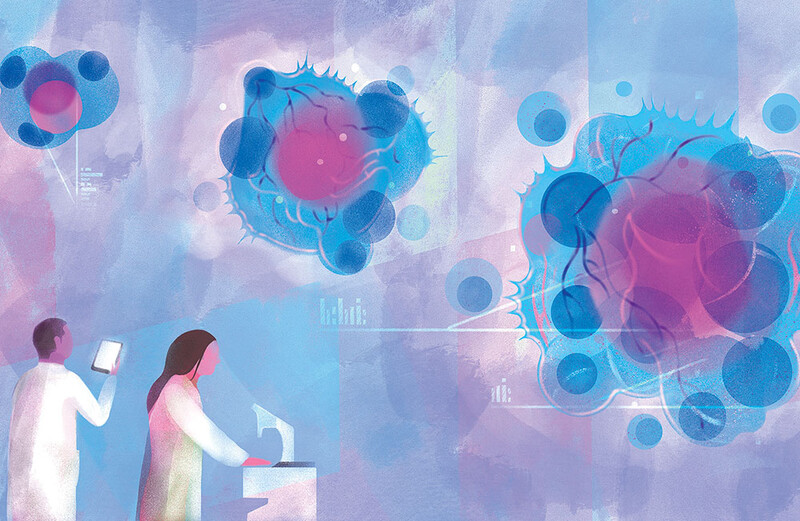Lian Mack ’99CC, a board-certified dermatologist and founder of the New York practice GlamDerm, helps patients enhance their natural features.
What are your areas of focus?
I specialize in cosmetic, medical, and surgical dermatology. The skin is the biggest organ in the body, and I see a potpourri of patients for everything from the diagnosis and removal of skin cancer to cosmetic procedures like Botox, fillers, laser treatments, and chemical peels.
Injectables like Botox and filler have soared in popularity. Who are the best candidates for these treatments?
Generally, people age thirty and above. After thirty, we stop making collagen — the protein that gives skin a plump, youthful look — and start losing it. Neurotoxins like Botox work by temporarily paralyzing muscles in the forehead, in the neck, and around the eyes, preventing wrinkles from forming or smoothing out existing lines. Fillers such as Juvéderm and Restylane, which are made of hyaluronic acid, can compensate for lost volume in places like the lips, cheeks, and under-eyes. Individuals in their twenties who already have etched-in lines due to strong facial movement or who have volume loss below their eyes due to genetics may be candidates as well.
Overall, people across age groups and genders are looking to maintain their youthful appearance for longer, and they’re looking for noninvasive procedures that don’t require a lot of downtime. There’s less stigma around cosmetic work than there was in the past, largely thanks to social media and pop culture. People are more comfortable admitting to it and talking about it. That said, some people are getting too much filler. Sometimes I will say no to a patient, because the goal of cosmetic enhancements, in my opinion, is not to make you look different. It’s to make you look like a better version of yourself.
What are the best alternatives to injectables?
You should seek out products and treatments that drive collagen production. Microneedling, which uses small needles to create tiny punctures in the skin, increases collagen by forcing the skin to heal itself. Laser treatments help drive collagen by creating areas of minor thermal injury. Lasers also correct hyperpigmentation, or discoloration, which is one of the earliest signs of aging. Keeping your skin tone even for longer will make you look more youthful.
It’s important for everyone to have a solid skin-care regimen. During the day, you should protect your skin with an antioxidant serum and a sunscreen of SPF 30 or higher, and at night, repair it using a retinoid or retinol coupled with moisturizer.
What is the difference between retinoids and retinols?
Both are vitamin A derivatives that increase collagen production. Retinoids are what we dermatologists prescribe for acne and are off-label for anti-aging, while retinols are available over the counter in numerous cosmetic products. A retinoid is more powerful because it’s in its active form when applied to the skin; a retinol takes longer to work.
Given the importance of sunscreen for cancer prevention and anti-aging, do higher SPF levels make much of a difference?
Studies show that the benefit tends to flatten out after SPF 30. An SPF of 50 does offer a little bit more protection, but after that, you’re getting the same results.
Which products and procedures do you think are a waste of money?
Moisturizers are something that you don’t need to break the bank on — drugstore versions are usually fine. There are a lot of cellulite treatments out there, like Emtone, that I don’t think work. I also don’t see any utility in products containing snail mucin, which is popular in Korean skin care.
What are some of the biggest skin-care mistakes you see people make?
People overdo it and end up drying out or irritating their skin. You don’t need a twelve-step skin-care routine. It’s really about choosing the right products with the best active ingredients. Social media has the tendency to make people think they need everything.
I often see people doing at-home procedures, like over-exfoliating or making DIY masks they see on TikTok or Instagram, that do more harm than good. I once had a patient tell me she had done a lemon mask, but citrus fruits applied to the skin and combined with sun exposure can create a toxic reaction, causing blisters and hyperpigmentation. As a doctor, it’s frustrating to have patients say they learned something from TikTok, because there’s a lot of misinformation out there! Even after thirteen years of education, it’s hard to compete with an algorithm.



